General Overview of Bruxism
Machine translation
Original article is written in RU language (link to read it) .
Patients with severely worn tooth tissues and pain in the TMJ area often visit the dentist. Some patients complain about grinding their teeth in their sleep, which is noticed by those around them. All these symptoms characterize the clinical picture of bruxism.
Characteristic features and treatment methods of bruxism in the webinar Bruxism: Manifestations, Etiology.
Bruxism is a pathological condition in which tonic, spasm-like contractions of the masticatory muscles occur periodically during sleep, accompanied by teeth grinding and jaw clenching. Bruxism can occur in both adults and children, with men more often affected.
Classification
There are two types of bruxism: daytime and sleep bruxism. In the first type, tooth tissue wear is not observed, whereas in sleep bruxism, there is teeth grinding with consistent and rhythmic contraction of the masticatory muscles, wearing down the teeth.
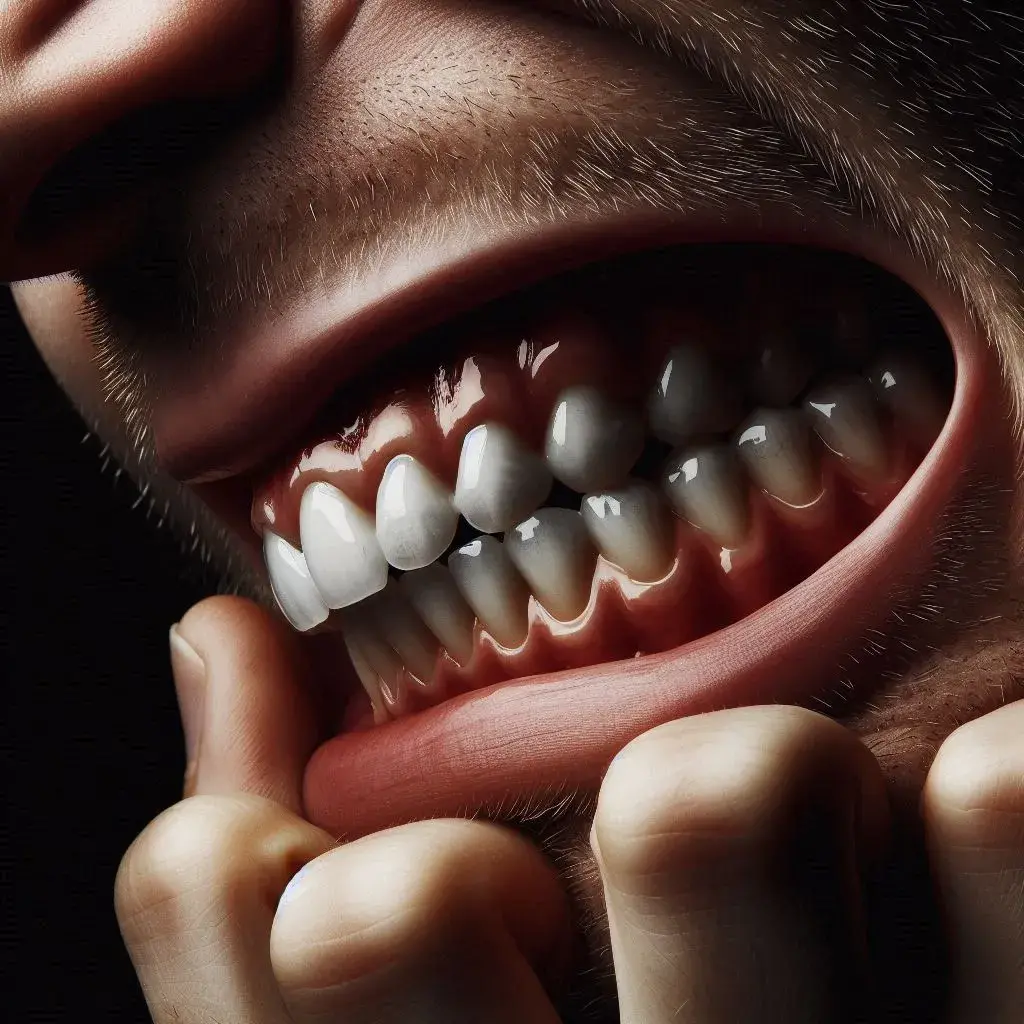
Figure 1. Teeth clenched, hypertonus of the masticatory muscles.
Another way to classify bruxism:
- hereditary, or primary, not associated with other diseases,
- secondary, caused either by pathology of the maxillofacial area or by neurological status diseases.
Often, the formation of secondary bruxism is associated with the intake of certain medications: antidepressants, recreational drugs, as well as the presence of psychomotor disorders in the patient (anxiety states, Parkinson's disease, stress). Individuals who abuse tobacco smoking, alcohol, and strong coffee are at risk of developing secondary bruxism.
In some cases, sleep bruxism is a sign of a sleep disorder. A connection has been proven between this pathology and obstructive sleep apnea (temporary periodic cessation of breathing during sleep). Apnea is typically characterized by a triad of symptoms:
- teeth grinding,
- talking in sleep,
- snoring and difficulty breathing.
Patients with apnea suffer from daytime sleepiness and chronic respiratory system problems.
Causes of Bruxism
The etiological prerequisites of bruxism are not well understood. Among specialists, there are conflicting versions of the nature of bruxism. One thing is indisputable – an individual approach is important in diagnosing the disease, as bruxism is a polyetiological pathology.
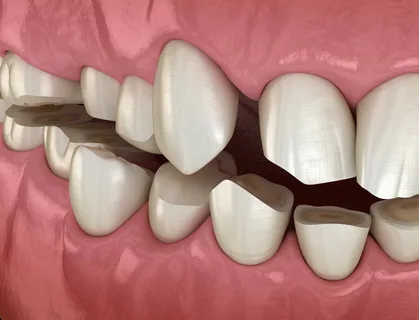
Figure 2. Tooth wear in bruxism.
In bruxism, there is a forceful contact between the occlusal surfaces of the teeth, which causes pathological wear of the latter, formation of enamel cracks, and abfraction defects. Occlusal trauma is the main cause of the development of pathological conditions in the periodontal tissues, occurrence of gum recession, inflammatory processes of traumatic origin in the pulp, occlusal anomalies, and TMJ dysfunctions.
Bruxism is the cause of extremely powerful effects on tooth tissues, periodontal tissues, and TMJ. According to laboratory studies, this disease generates forces that are tens of times greater than the chewing load.
Clinical Picture
This condition is not life-threatening, however, the consequences of significant interocclusal forces characteristic of bruxism reduce the patient's quality of life. The main symptoms of the disease are:
- Premature tooth loss due to tissue destruction by the age of 40-50 years.
- In severe cases of the pathology, the use of implants and extensive restorations is contraindicated, as restorations quickly deteriorate and implants break.
- Bruxism causes changes in the patient's appearance.
- What external changes can occur as a result of bruxism
- Worn and damaged teeth lose their attractiveness, primarily affecting aesthetics.
- The interocclusal height decreases, changing the height of the lower part of the face, forming "bags" under the eyes, a pronounced nasolabial fold, downturned mouth corners, and the chin protrudes forward, making the patient look older than their age.
- As a result of excessive muscle tone, primarily in the masticatory muscles, hypertrophy is observed. Such an increase in muscle tissue contributes to the transformation of facial features, forming a "square face". To restore aesthetics, patients resort to injections of toxic and lysing agents, as well as surgical treatment - excision of fragments of the masticatory muscles.
- Patients often report increased muscle fatigue, migraine-like morning headaches, neck and jaw pain.
- Bruxism can provoke blockage of the excretory duct of the parotid salivary gland, disrupting saliva secretion, leading to its stagnation and inflammation of the gland. Xerostomia develops.
- It is believed that bruxism is one of the key factors in the development of dysfunction of the temporomandibular joint.
- If the patient has amalgam restorations, bruxism can lead to chronic mercury poisoning, a component of amalgam.
- This pathological condition is more often observed in patients with anomalies of the dental-jaw system. Although bruxism itself often causes the formation of occlusal anomalies, significantly complicating orthodontic treatment.
- The social aspect of the pathology is due to discomfort for family members, which provokes a depressive state, increased irritability, withdrawn behavior, alcohol abuse, and smoking.
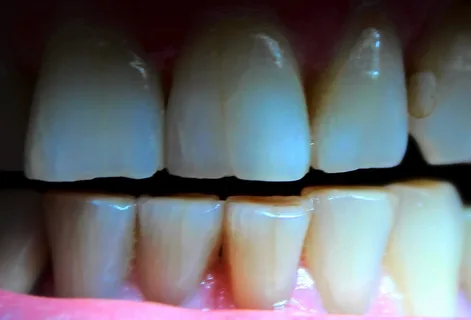
Figure 3. Enamel cracks.
Conditions most commonly found in patients with bruxism:
- gum recession, periodontitis inflammation;
- formation of dental and jaw anomalies;
- occurrence of TMJ dysfunction;
- neuralgic pain of facial muscles;
- otalgia;
- jaw pain;
- ringing in the ears – tinnitus;
- dizziness;
- aesthetic disorders;
- insomnia, apnea;
- migraine-like morning pains;
- daytime sleepiness;
- depression, stress.
Many people involuntarily clench and unclench their teeth. However, such a habit is not always bruxism, as the diagnosis requires the detection of pathological consequences of the habit. Bruxism is diagnosed if morphological changes in the maxillofacial area are identified, accompanied by complications in other organs and systems, and social discomfort.
Differential Diagnosis
To differentiate bruxism from other pathological conditions with similar neurological and somatic symptoms, it is best to use electromyography of the masticatory muscles during sleep. The study is conducted using the Sleep Guard device. Over several nights, electrical potentials are recorded. Repeated persistent contractions of the masticatory muscles with maximum amplitude confirm the pathological hyperfunction of the muscles at the morphological level and are considered as bruxism.
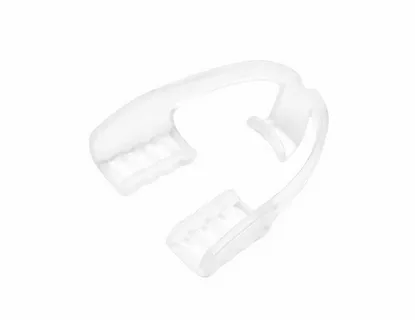
Figure 4. Mouthguard option for bruxism.
There is a method that allows determining the severity of the disease, it is based on the assessment of tooth tissue wear, which corresponds to a five-point scale:
- 0 points - no wear;
- 1 point - wear is noted within the enamel;
- 2 points - wear is accompanied by a reduction in interocclusal height, reaches the enamel-dentin border;
- 3 points - wear is accompanied by a reduction in interocclusal height, corresponds to 1/3 – 2/3 of the tooth crown height;
- 4 - wear exceeds 2/3 of the tooth crown height.
Treatment Principles
All therapeutic measures for bruxism are divided into two groups:
- Measures aimed at minimizing local manifestations (elimination of hypertonus of masticatory muscles, interocclusal trauma).
- Measures aimed at eliminating risk factors, treatment of the underlying disease (stress, neurodegenerative disorders, dental-jaw anomalies).
The treatment tactics for daytime bruxism include the following measures: hypnosis, psychoanalysis, physiotherapeutic muscle relaxation, meditation, social and psychological adaptation.
The tactics for the nighttime form involve oral sanitation, elimination of occlusal trauma, normalization of dental-jaw anomalies, and medicinal muscle relaxation of the masticatory muscles.
Today, to prevent occlusal trauma in bruxism, various guards or splints are made from elastic synthetic and natural materials (natural resins, rubber).
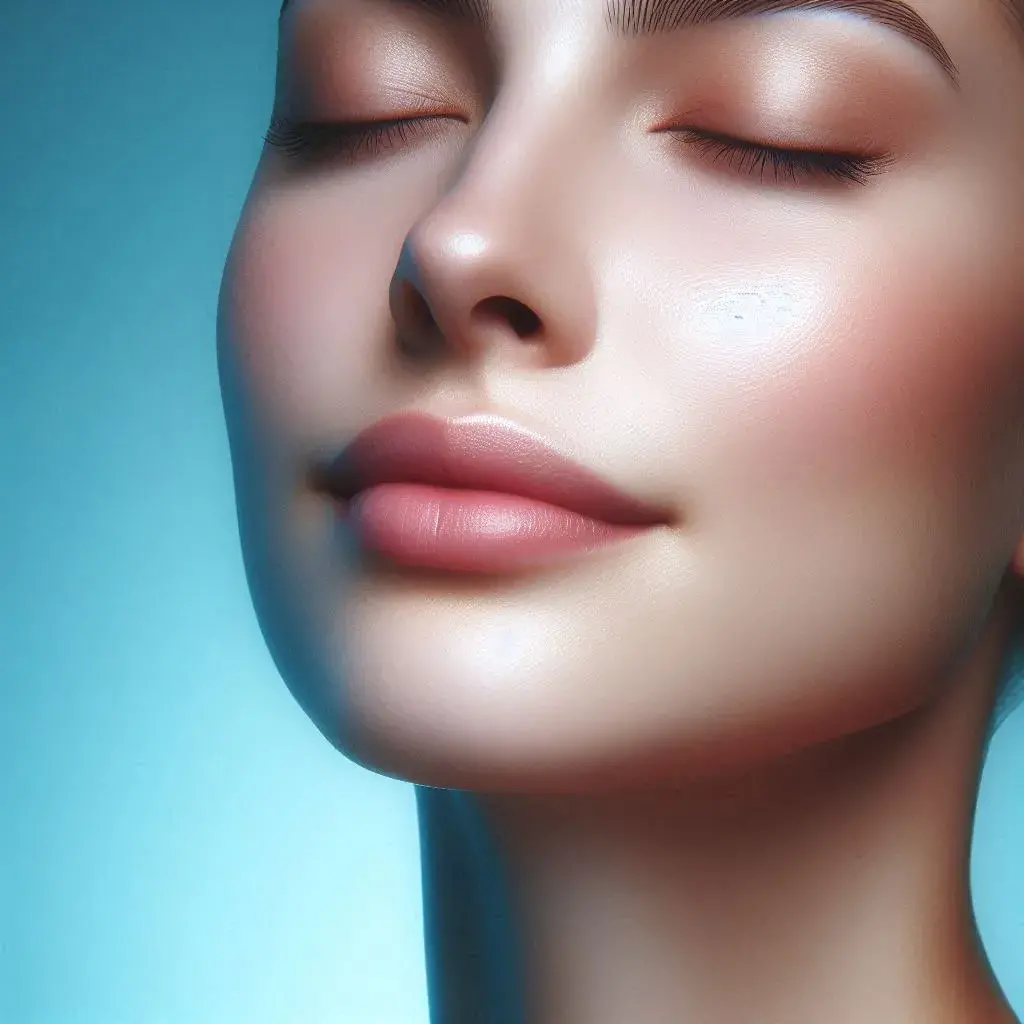
Figure 5. Meditation and relaxation in the fight against bruxism.
The latest development in this field is the Sleep Right Slim device, whose design takes into account the experience of interocclusal splints of predecessors and positioners, all the shortcomings typical for previous designs have been minimized.
Its advantages: lightweight design, suitable for treating all forms of bruxism, fits teeth perfectly, eliminates snoring, has high wear resistance.
Using digital protocols for treating patients with TMJD and occlusal problems in the webinar Bruxism: diagnostics, clinical symptoms. Analog and digital approaches.
